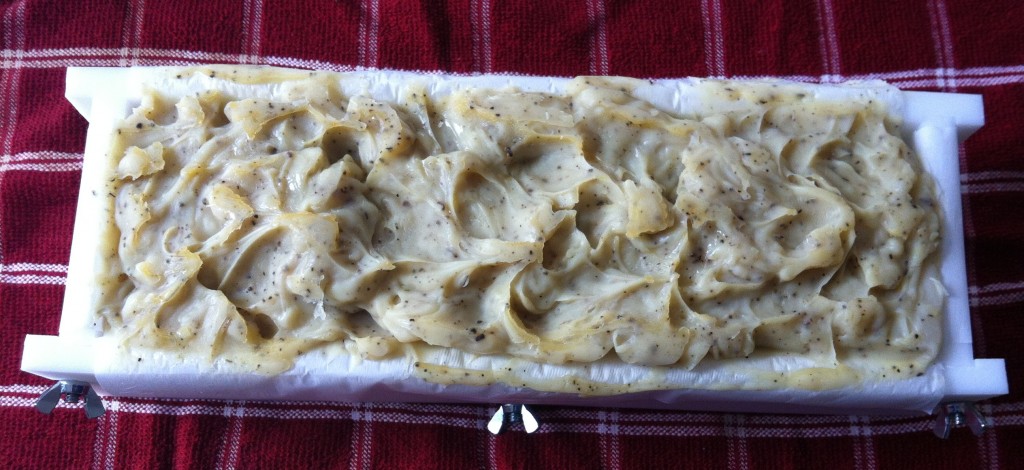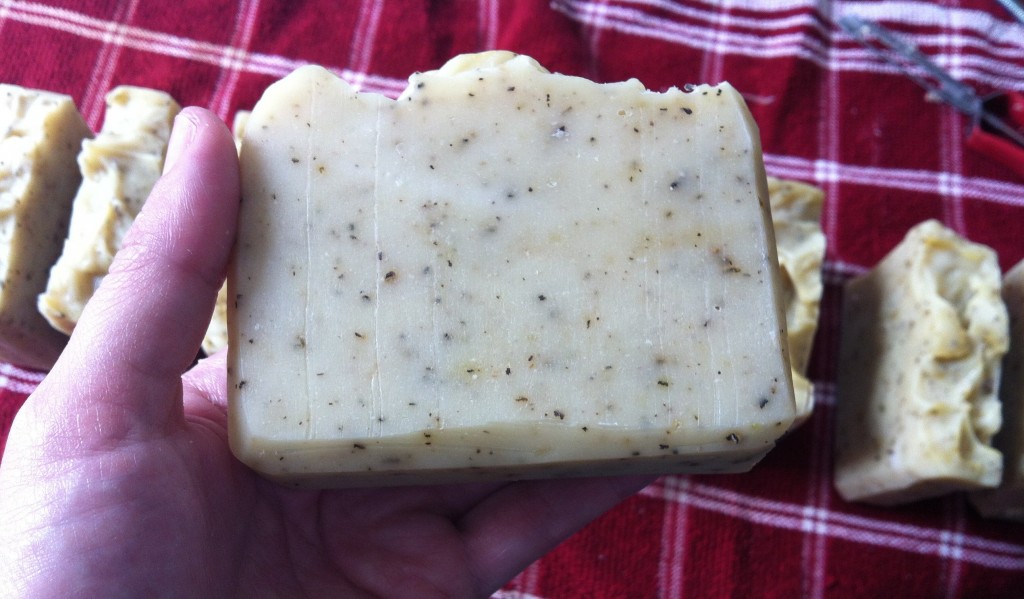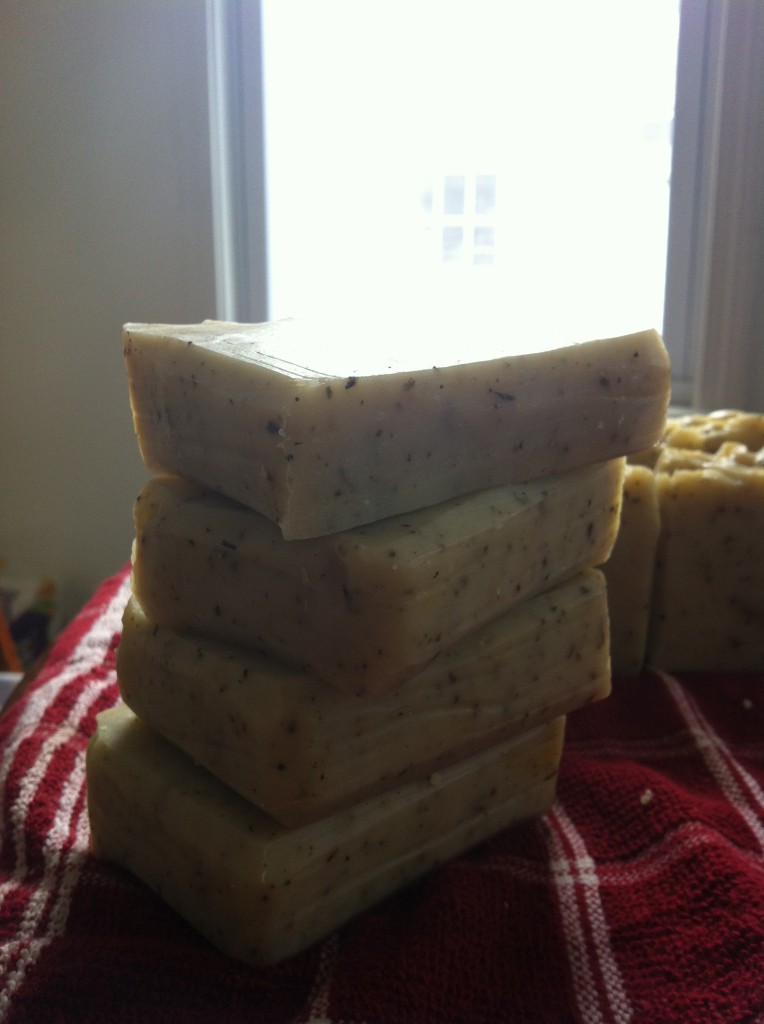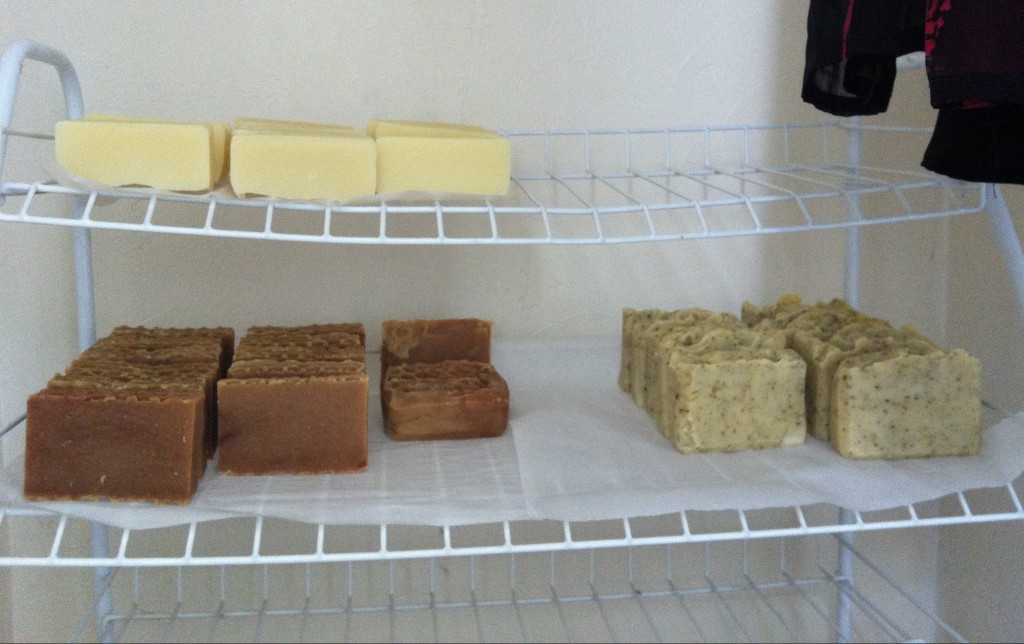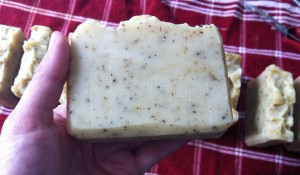 The first handmade soap I ever used was purchased from Indigo Bath and Body at the farmers’ market in Georgia, where I used to live. I loved the soap. It smelled wonderful (lavender and spearmint essential oils), and it felt amazing. The best thing I’d ever put on my face. Until this week.
The first handmade soap I ever used was purchased from Indigo Bath and Body at the farmers’ market in Georgia, where I used to live. I loved the soap. It smelled wonderful (lavender and spearmint essential oils), and it felt amazing. The best thing I’d ever put on my face. Until this week.
I hate to say it because it sounds a bit boastful, but my lemongrass sage soap is even better for my face than the wonderful handmade soap I have been using whenever I can get my hands on it. I even stocked up prior to my move!
I have combination skin. My skin is oily in the T-zone. I rarely have issues with dry skin, but I do use a moisturizer formulated for oily skin in the morning. I have large pores on my nose and surrounding areas, and I have always been embarrassed about them, particularly when I purchased makeup and the helpful cosmetic counter assistants pointed them out to me (as if I didn’t know about them) and tried to steer me toward products that would hide or minimize them. The last salesgirl who pointed out my large pores tried to sell me some kind of mask that costs way more than anything I have ever put on my face, and is certainly more than I can afford. No way. I have tried Clarins’s Truly Matte Pore Minimizing Serum (which was pretty much the most expensive beauty product I’ve ever used on myself). I have tried Mario Badescu’s Silver Powder. I have even tried baking soda and hydrogen peroxide. These things all worked a little bit, but they never had a long-lasting impact, nor did they seem to make more than a small difference.
I had given up and decided that the best I could hope for was simply to mask my large pores under makeup.
When I made my first batch of lemongrass sage soap, I made too much for my mold and balled up the rest into two large “eggs.” I have been using one of the eggs this week, just since Sunday when I cut my soap into bars.
Incredibly, my pores are smaller. Like, tiny. I can hardly believe it. And it’s definitely the lemongrass sage soap because that’s the only new product I’ve started using—the only variation in my routine. I can’t say that it is necessarily the oils I’m using in the soap—olive, coconut, palm, and shea butter—although these oils make a nice conditioning, cleansing bar. I have wiped a cottonball with astringent over my skin after washing off my makeup with the lemongrass sage soap, and there has only been the barest trace of makeup right around the edges of my face. If I used a washcloth, I’m sure I wouldn’t have even that small amount because I can tell the residual makeup is at my hairline, and it’s just hard to get all of it. I have read, however, that lemongrass is good for oily skin and acne, and I have to wonder if the secret ingredient in my soap isn’t the essential oil I added only for fragrance.
It seems kind of silly to spend so much time extolling the virtues of something I made myself, but I have honestly tried everything there is, and I had just given up. For this reason, if no other, I’m so glad I learned how to make soap.
You will be able to buy my lemongrass sage soap from my Etsy store before the year is out.

